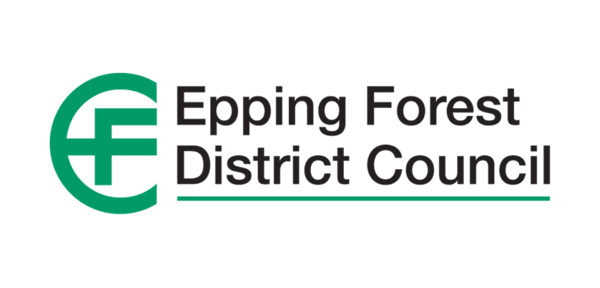Improving the quality and efficiency of council services
In setting out its vision for 2015-2020, Epping Forest District Council recognised the role that “modern technology and innovation” would have in helping to improve services for citizens. To support its Corporate Plan, it deployed Esri’s ArcGIS platform and is now not only delivering better public services, but also making vital resource and cost savings.
The use of ArcGIS web services gives citizens improved access to information online
The deployment of ArcGIS mobile apps allows the council to provide services more efficiently and reduce costs
ArcGIS improves council decisions by delivering customised information to departments
The Challenge
Epping Forest District Council has a multifaceted vision for the future. It wants to support the development of the local economy, build new homes and meet the often challenging needs of citizens, while protecting the green belt, conserving the character of local communities and keeping the council tax low. The council knew that if it was to achieve these goals, it would need to invest in new technologies and look for creative ways to transform its processes. Indeed, it stated in its Corporate Plan 2015-2020: “We want to embrace modern technology and innovation as we strive to improve the quality and efficiency of our services.”
For many years, the council had been using an assortment of different geographic information system (GIS) packages, from multiple suppliers, but felt constrained by the lack of flexibility and functionality that this mixed approach offered. So, in 2015, to support its Corporate Plan, it decided to replace all its legacy GIS solutions with Esri’s ArcGIS platform. “ArcGIS gave us a lot of options, at a time when we needed to embrace new, more innovative ways of working,” says Andrew Gardener, GIS Officer at Epping Forest District Council.
One of the main advantages of ArcGIS is its flexibility and the wide range of components included in the platform as standard, which make it quick and easy to develop many different apps and services
Andrew Gardener – GIS Officer, Epping Forest District Council
The Solution
Within just eight months of deploying ArcGIS, the council’s small GIS team of three people had delivered a staggering array of new GIS apps and services, including:
- Customised web maps for council departments, displaying data relevant for different teams of employees in a format that is easy to access and understand
- Public-facing web maps, allowing citizens to use mobile devices to more easily access information on everything from the locations of polling stations to road closures along the route of the Tour de France
- Mobile apps showing field-based employees the quickest routes between jobs and enabling them to collect data electronically
- A centralised store of geo-spatial data and a single GIS platform for sharing ‘one version of the truth’ throughout the entire organisation.
“The fact that we introduced all this in the first eight months demonstrates just how easy it is to work with ArcGIS,” says Gardener. “One of the main advantages of ArcGIS is its flexibility and the wide range of components included in the platform as standard, which make it quick and easy to develop many different apps and services.”
Gardener and his colleagues have been particularly impressed by the ease at which they can develop new solutions for users of smartphones and tablets using ArcGIS. He says: “ArcGIS gives us mobile GIS apps that we can just pick up and use. It has enabled us to create user-friendly mobile solutions that start to save money, improve our efficiency and deliver better information to citizens straight away.”
ArcGIS […] has enabled us to create user-friendly mobile solutions that start to save money, improve our efficiency and deliver better information to citizens straight away
Andrew Gardener – GIS Officer, Epping Forest District Council
The Benefits
Epping Forest District Council is now gaining extensive benefits from its use of ArcGIS and delivering on its corporate vision.
Better services for citizens
With the development of its new web maps, Epping Forest District Council can now make better information accessible to the general public, including information that wasn’t publically available previously. For added convenience, citizens can also access this information direct from their smart phones and tablets, from any location. The council’s web maps have been well received by local citizens; a new Waste Collection Date web map received over 10,000 hits in the first fortnight alone.
Greater efficiency in council processes
ArcGIS has contributed to significant improvements in the efficiency of key council processes. For instance, it has been used to create a mobile GIS for field-based surveyors, which enables them to check and record the condition of waste bins, bus shelters and other assets far more quickly. The automated solution converts spreadsheets with lists of daily jobs into a time-efficient route; displays this journey (and job details) on the surveyors’ smartphones; and allows asset data to be collected electronically, removing the need for subsequent data entry.
Sustainable cost savings
The efficiency improvements are expected to translate into sustainable long term cost savings, which will help the council to maintain its low council tax bands. The council no longer has to print out paper maps to give to its mobile surveyors and also saves on fuel, as surveyors take the most direct routes between jobs. In addition, citizens who use the online maps to ‘self-serve’ information may not need to call the council, which will dramatically reduce the cost of customer contact.
Well-informed decision making
Employees across multiple departments now rely on intranet-based maps to gain all the information they need to process planning applications and much more besides. “Everyone has a customised GIS, with the precise layers of data they need to do their jobs,” Gardener says. “Consequently, it is much easier for employees to make quicker, more informed decisions and deliver a better quality service for citizens.”



